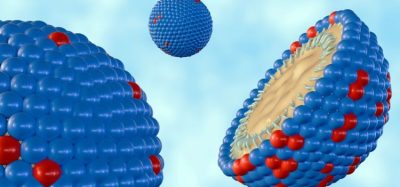Crizotinib-radiation therapy combination may help preserve hearing in NF2
Posted: 6 February 2018 | Dr Zara Kassam (European Pharmaceutical Review) | No comments yet
Adding the targeted cancer therapy drug crizotinib to radiation therapy for tumours associated with the genetic disorder neurofibromatosis 2 may reduce the hearing damage that can be exacerbated by radiotherapy…


Adding the targeted cancer therapy drug crizotinib to radiation therapy for tumours associated with the genetic disorder neurofibromatosis 2 (NF2) may reduce the hearing damage that can be exacerbated by radiotherapy.
A Massachusetts General Hospital (MGH) research team reports that the use of crizotinib to block a specific molecular pathway both enhanced the radiosensitivity of tumours in mouse models of NF2, allowing a reduction in radiation dosage, and inhibited the growth of cultured tumour cells from NF2 patients.
“The hallmark of NF2 are intracranial tumours called vestibular schwannomas, which typically lead to profound hearing loss,” explains Dr Lei Xu, of the Steele Laboratories of Tumor Biology in the MGH Department of Radiation Oncology, co-corresponding author of the report. “For most patients, hearing loss is the most disabling symptom of these tumours, and the primary treatments for growing tumours – surgery and radiation therapy – can further damage hearing. The development of a novel therapeutic strategy with enhanced efficacy and minimal treatment-related hearing loss is urgently needed.”
In 2016, Steele Labs researchers and colleagues from Johns Hopkins University found that bevacizumab treatment led to greater hearing improvement in NF2 patients who had lower circulating levels of hepatocyte growth factor (HGF), which is known to interact with the cMET oncogene. In addition, a 2015 study led by Dr Konstantina Stankovic, of Massachusetts Eye and Ear – a co-author of the current report – had demonstrated that pathways controlled by HGF interact with pathways controlled by the angiogenesis factor VEGF in schwannomas. These and other studies suggested that the HGF-cMET pathway may play a role in schwannoma progression, response to treatment and hearing loss.
After first confirming in a standard mouse model of NF2 that radiation therapy activated cMET signaling, leading to therapy resistance, the researchers tested use of crizotinib to block cMET signaling in two mouse models – the standard model in which NF2 cells are injected into the sciatic nerve and their new model that implants schwannoma cells into the brain adjacent to the eighth cranial nerve. In collaboration with Dr Stankovic, the MGH team confirmed that their novel model led to the same kind of hearing loss experienced by NF2 patients.
In both mouse models, the use of crizotinib to block the HGF-cMET pathway improved treatment response by enhancing radiation-induced DNA damage, significantly reducing tumour growth and extending survival. Genetic knockdown of cMET had similar results, and experiments using the novel mouse model showed that blocking cMET itself did not adversely affect the animals’ hearing.
In collaboration with co-authors Dr Scott Plotkin, of the Pappas Center for Neuro-Oncology in the MGH Cancer Center and Dr Anat Stemmer-Rachamimov, MGH Pathology, Xu and co-corresponding author Dr Rakesh Jain, director of the Steele lab, also developed a better system for culturing patient-derived schwannoma cells, which in contrast to malignant tumor cells have been difficult to culture. The improved system maintained patient-derived cells in culture for up to three weeks, and the team’s experiments revealed that both HGF expression and cMET activation correlated with tumour growth and that cMET blockade inhibited schwannoma growth.
“With this new culture model we can screen libraries of drugs for anti-tumour activity,” says Dr Jain. “These methods and tools will address a major bottleneck in the NF2 field by providing robust, expandable and biologically diverse cellular models that recapitulate the defining features of this and other human diseases.”
Dr Xu notes that, since crizotinib is FDA approved for the treatment of certain types of lung cancer, their study has the potential for rapid clinical translation. She says, “NF2 is a disease that needs new solutions, and our findings provide a compelling rationale that paves the road for clinical testing of this combined therapy to treat vestibular schwannomas in human patients.”
The paper has been published online in PNAS.
Related topics
Cell-Based Assays for Screening, DNA, Drug Delivery Systems, Microbiology
Related organisations
A Massachusetts General Hospital (MGH), Johns Hopkins University
Related drugs
Related people
Dr Anat Stemmer-Rachamimov, Dr Konstantina Stankovic, Dr Lei Xu, Dr Rakesh Jain, Dr Scott Plotkin









